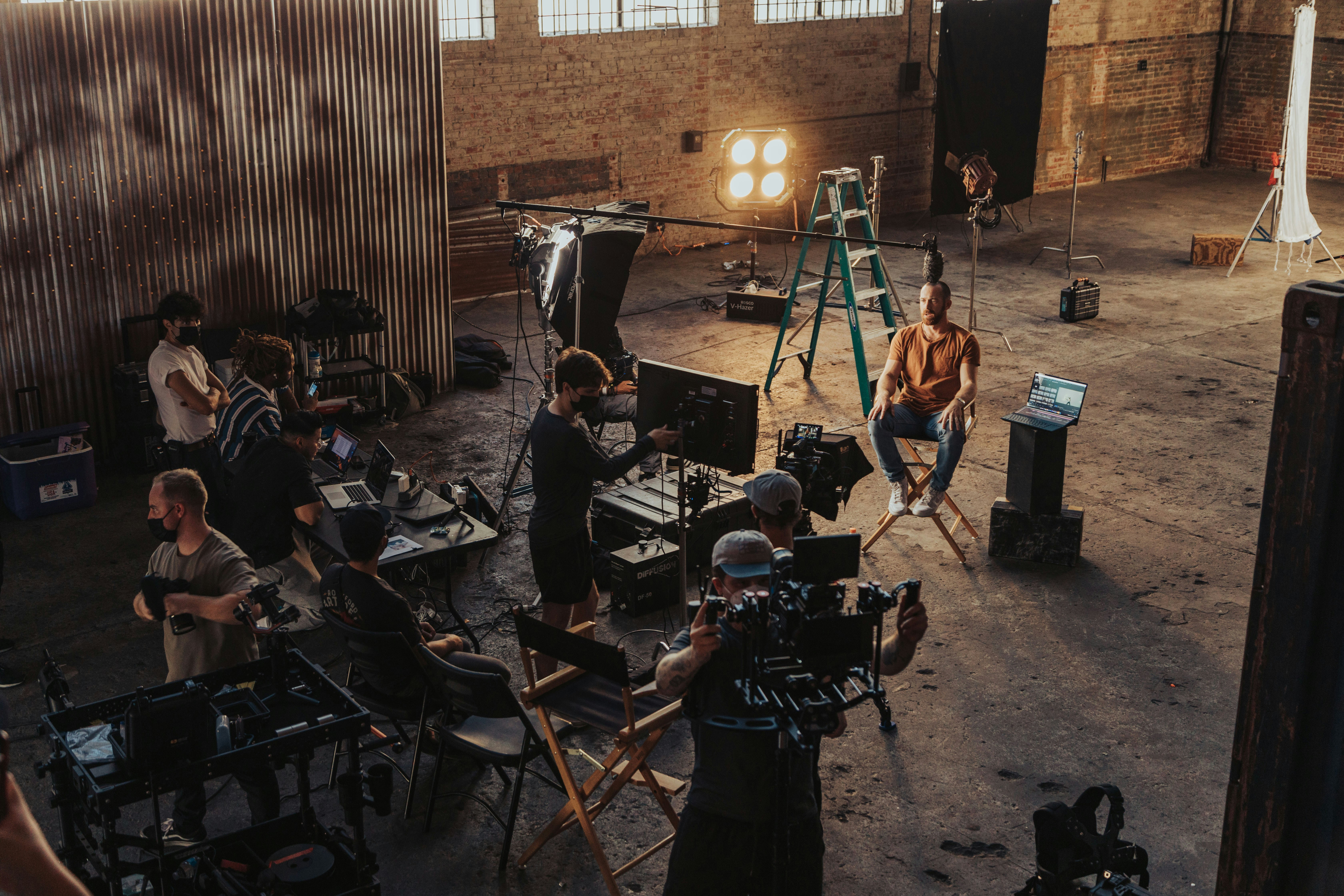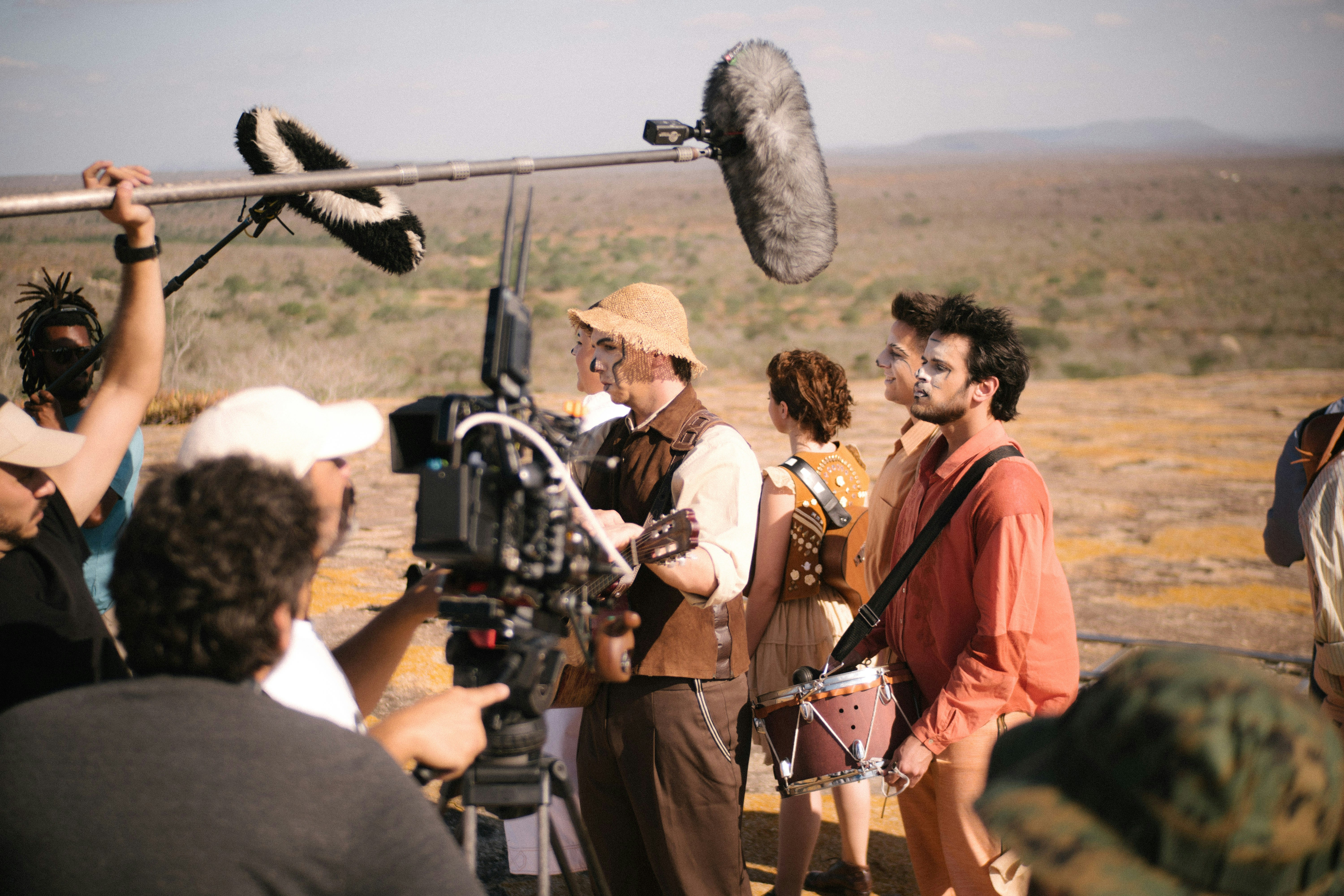How to Hire the Perfect Cast and Crew for Your Project
by WriteSeen
Hiring a cast and crew can feel like a creative juggernaut, where the right choices elevate your project to new heights.
Understanding the complexities of film and theater production is no small feat, but your initiative pays off. To navigate these challenges, we've crafted a guide with key insights:
- Learn why hiring a cast and crew is a critical step in production.
- Discover innovative AI tools for identifying project needs.
- Explore strategies for an inviting, collaborative work environment.
Understanding Your Production Needs
Before diving into the process of hiring your cast and crew, it's crucial to get a clear understanding of your production needs. This involves taking a step back and evaluating the specific requirements of your project. Here's how to break down this vital phase:
- Identify all necessary roles. Determine the specific roles you need based on your project’s genre, scope, and vision. Think beyond the obvious actors and directors. Consider technical experts, script supervisors, and even digital content managers to fill those unique needs.
- Manage the budget effectively. Budgeting is where planning meets practicality. While striving for the best talent, align your choices with financial realities. Divide funds between key roles and technical equipment to strike a balanced production setup.
- Set a timeline and benchmarks. Establish a realistic timeline with major benchmarks. This keeps the project on track and ensures every team member knows when their contributions are due. Flexibility is key—leave room for the unforeseen.
This phase is all about building a roadmap that aligns resources, people, and timeframes. With these elements in motion, you'll enhance creativity and focus on essential tasks.

How to Identify Key Roles for Your Project
Pinpointing the key roles for your project is the first giant leap toward a seamless production. Each role carries its weight and contributes uniquely to the project's success. Here’s how to ensure you’re not leaving any gaps that could derail your vision:
Essential Roles to Consider
- Director and Producer: These roles are the backbone of production. The director ensures the creative vision aligns with the story, while the producer manages logistics and keeps the financial engine going.
- Actors and Actresses: Choose talents who can bring your characters to life. Look for those with a history of versatility and range, crucial for dynamic storytelling.
- Technical Experts: Cinematographers, sound engineers, and lighting specialists turn ideas into reality. Their expertise is vital for creating an authentic visual and auditory experience.
Evolving Roles in Modern Production
- Digital Content Managers: Today’s productions often extend beyond traditional media. Having someone to manage digital presence through social platforms strengthens audience engagement.
- Prompt Engineers: As technology becomes more integrated into storytelling, hiring roles like this can help in creating more immersive and engaging experiences.
Recognizing these roles ensures you're not just filling positions but matching talent with tasks catered to your project's aims. This strategic approach sets your foundation strong and adaptable for future shifts.
Where to Find Talented Cast and Crew Members
Now that you know what roles you need, the hunt for talent begins. Finding the right cast and crew members involves scouring professional networks and creative spaces, both online and offline. Here are strategies for locating top-notch talent:
- Professional Networks: Join forums and groups relevant to your industry. Whether it's local film boards or international associations, tapping into these communities gives you direct access to recommendations.
- Industry Meet-ups and Events: Attend film festivals, workshops, and creative meetups. Such events provide excellent networking opportunities where industry professionals gather to share insights.
- Online Platforms: Utilize online platforms to reach a broader audience. Social media, specialized talent websites, and creative marketplaces like WriteSeen offer robust options for scouting. They're not just pools of talent but platforms for collaboration and feedback.
While established professionals bring experience and reliability, don't discount fresh talent. Newcomers often provide innovative ideas and enthusiasm, giving your project a refreshing edge. Choose a mix that complements your project's needs.

Crafting an Effective Job Description
Your job description is your pitch—it’s how you communicate what you’re looking for and why talented individuals should care. Crafting it effectively is the art of balancing detail and clarity. Here’s your blueprint:
Key Components of a Compelling Job Description
- Clear Role Definition: Start with a straightforward role title followed by a concise summary of responsibilities. Avoid vague terms; specifics attract the right candidates.
- Detailed Requirements: List required skills and experiences. Be transparent about must-haves versus nice-to-haves. This clarity sets clear expectations from the start.
- Unique Selling Proposition: What makes your project stand out? Whether it's a strong creative vision or pioneering technology, make those unique aspects shine.
Additional Tips for Success
- Transparency in Terms: Clearly communicate terms regarding pay, duration, location, and expectations. Honesty here saves time and builds trust.
- Inclusive Language: Use language that encourages diversity. This shows a commitment to fostering an inclusive environment, broadening your talent pool.
An effective job description minimizes misunderstandings and maximizes interest. It's not just the start of a professional relationship but an invitation to embark on a creative journey together.
Conducting Successful Auditions and Interviews
With a well-crafted job description in hand, move to the next crucial phase—auditions and interviews. This is where you get to see potential in action and determine team compatibility with your project's vision and ethos. Here's how to ensure success in this pivotal stage:
Structuring Auditions and Interviews
- Skill Assessment: Create scenarios that require candidates to demonstrate relevant skills. For actors, this might involve reading from the script. For crew roles, practical tasks or problem-solving tests are effective.
- Cultural Fit: Beyond skills, assess if candidates resonate with your project's values and working style. Include questions that explore their past collaborative experiences or how they handle stress.
- Flexible Formats: Consider multiple formats—live auditions, virtual calls, and pre-recorded submissions can all be useful. This flexibility helps cater to schedules and may even reveal insights into candidate adaptability and resourcefulness.
Key Takeaways
- Objective Feedback: Rely on a panel or multiple perspectives to reduce bias in evaluations. Diverse viewpoints lead to balanced decisions.
- Engage and Connect: Use this as an opportunity to motivate and inspire candidates by sharing your enthusiasm about the project and its potential impact.
The goal is to go beyond resumes and engage with the real, often nuanced, personalities behind the applications. This builds a team that’s not only skilled but also harmonious and committed.

Negotiating Contracts and Compensation
With a shortlist of potential team members, the next step is negotiating contracts and compensation. Balancing fairness with budgetary constraints requires strategy and clarity. Here’s how you can navigate these waters effectively:
Steps for Successful Negotiation
- Preparation and Research: Know the going rates for different roles within your industry. This ensures competitive yet fair compensation offers.
- Transparent Communication: Be upfront about non-negotiable aspects. Openness fosters trust and aids in reaching mutually beneficial agreements swiftly.
- Flexibility: Sometimes compensation isn't just about money. Consider other incentives like profit-sharing, credits, or future collaboration opportunities.
Negotiation isn’t just about getting what you want; it’s about finding a common ground that sets a positive tone for collaboration.
Ensuring clarity and mutual understanding from contract terms to compensation helps form a foundation of trust and commitment from day one.
Fostering a Collaborative and Positive Work Environment
Once the dream team is assembled, shift focus to cultivating a work environment that fosters collaboration and positivity. Happy crews deliver extraordinary results. Here's your playbook for creating such an atmosphere:
- Open Communication: Encourage open lines of dialogue. This could be through regular check-ins, feedback sessions, or informal gatherings.
- Respect and Recognition: Show appreciation for every role, no matter how small. Recognition boosts morale and drives individuals to perform their best.
- Conflict Resolution: Have mechanisms in place for addressing disagreements professionally and swiftly. Early intervention prevents discord from escalating and keeps the team focused.
By investing in the team's well-being, you’re not only enhancing daily productivity but also constructing an environment where creativity thrives.

Leveraging Technology for Efficient Team Management
Assembling a cast and crew is just the beginning. Managing them efficiently through technology can streamline processes and minimize headaches. Let’s explore how tech can be your best ally:
Technological Tools for Management
- Project Management Software: Tools like Trello or Asana help track tasks, deadlines, and responsibilities, keeping everyone in the loop.
- Communication Platforms: Platforms such as Slack or MS Teams facilitate instant collaboration and maintain open channels of communication.
- Cloud Storage Solutions: Services like Google Drive and Dropbox enable every team member to access essential documents and files in real time, eliminating confusion and delays.
Effective use of technology isn’t just about tools—it's about enhancing coordination, ensuring transparency, and maintaining a seamless workflow across your project timeline.
Conclusion
Hiring a cast and crew is more than filling roles—it’s about building a collaborative force that shares your creative vision. From understanding production needs to identifying both traditional and emerging roles, each step lays the groundwork for a smooth and inspired workflow.
By focusing on clarity, culture, and communication, you not only find the right people but create an environment where everyone thrives. Incorporating technology, fostering inclusion, and aligning expectations through strong contracts help ensure your team delivers with purpose and passion.
Ready to bring your project to life? Join WriteSeen to connect with a global network of actors, crew members, and collaborators. From job descriptions to feedback loops, our platform helps you manage production seamlessly—so your story gets the spotlight it deserves.
TAGS